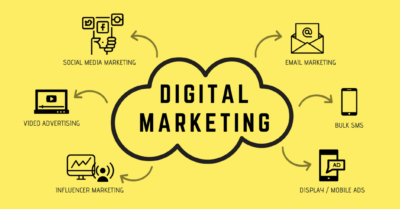Every practitioner in the healthcare space should know about target marketing, particularly if your goal is to acquire more customers or to generate more leads and increase sales. The industry is constantly evolving. With new technologies, treatments, and regulations, it can be challenging to keep up with the latest trends.

Target marketing is a strategy that involves identifying a specific audience and tailoring your marketing efforts to meet their needs. Therefore, target marketing in healthcare can be particularly effective because it allows you to reach the right people with the right message at the right time.
There are many ways to implement target marketing in healthcare. For example, you can use data analytics to identify patterns in patient behavior and preferences. This information can then be used to create targeted campaigns that resonate with your audience, such as marketing campaigns for diabetic patients to sell a wearable device.
You can also use social media to engage with patients and build relationships with them over time. According to a healthcare report by Madavi, 90% of internet users between 18 and 24 years trust medical information shared on social media, presenting a larger emerging market for healthcare organizations because young people access the internet and social media more frequently.
By providing valuable content and answering their questions, you can establish yourself as a trusted source of information and build loyalty among your patients. Target marketing helps you identify and target a specific group of patients by tailoring your services to meet the unique needs of that group, resulting in higher patient satisfaction, better health outcomes, and a good return on investment.
Components of Target Marketing in Healthcare
Target marketing in healthcare involves three key components: market segmentation, targeting, and product positioning. Market segmentation is the process of dividing the market into smaller groups based on specific characteristics such as age, gender, income, and health status. Targeting involves selecting a specific group of patients who are most likely to benefit from your healthcare services. Product positioning is the process of creating a unique value proposition that sets your healthcare services apart from the competition.

An effective strategy for target marketing in healthcare requires you as a provider to conduct market research to identify the specific needs and preferences of their target audience. This research can include surveys, focus groups, and other data collection methods to gather information about patient demographics, health behaviors, and attitudes towards healthcare.
Once the target audience has been identified, healthcare providers can tailor their marketing messages and services to meet the unique needs of that group. This can include developing targeted advertising campaigns, creating personalized patient education materials, and offering specialized healthcare services that address the specific health concerns of the target audience.
1. Segmentation in Target Marketing in Healthcare
Market segmentation is an essential strategy for target marketing in healthcare that helps healthcare providers to understand their target audience better. By dividing the market into smaller segments, healthcare providers can tailor their marketing messages to specific groups of people, making their campaigns more effective. Market segmentation in healthcare involves four main types: demographic, psychographic, geographic, and behavioral segmentation.
Demographic Segmentation
Demographic segmentation is one of the most common types of segmentation for target marketing in healthcare. This type of segmentation divides the market based on characteristics such as age, gender, income, education level, and occupation. Understanding these factors can help healthcare providers to create targeted marketing messages that resonate with specific groups of people. For example, a healthcare provider might create a marketing campaign that targets older adults with chronic health conditions, such as diabetes or heart disease.

Psychographic Segmentation
Psychographic segmentation in target marketing in healthcare divides the market based on personality traits, values, attitudes, and lifestyle. By understanding these factors, healthcare providers can create marketing messages that appeal to the emotional needs of their target audience. For example, a healthcare provider might create a marketing campaign that targets individuals who are health-conscious or environmentally conscious.
Geographic Segmentation
Geographic segmentation is a type of market segmentation that divides the market based on geographic location. This type of segmentation can be useful for healthcare providers who operate in specific regions or communities. By understanding the needs and preferences of people in a particular area, healthcare providers can create targeted marketing messages that resonate with their target audience.
Behavioral Segmentation
For target marketing in healthcare, behavioral segmentation divides the market based on consumer behavior. This type of segmentation can be useful for healthcare providers who want to target individuals who are more likely to engage in certain behaviors, such as exercising regularly or eating a healthy diet. You can create marketing messages that appeal to these behaviors to encourage individuals to take action and make positive changes in their lives.
2. Strategies for Target Marketing in Healthcare
Target marketing in healthcare has three primary targeting strategies: differentiated marketing, concentrated marketing, and customized marketing.

Differentiated Marketing
Differentiated marketing involves targeting multiple segments of the market with different offerings. This strategy is useful when there are multiple groups of customers with different needs and preferences. For example, a healthcare organization may offer different services to seniors, families, and young adults.
Concentrated Marketing
Concentrated target marketing in healthcare involves focusing on a single segment of the market with a specialized offering. This strategy is useful when there is a specific group of customers with unique needs that are not being met by existing offerings. For example, a healthcare organization may focus on providing specialized care for patients with rare diseases.
Customized Marketing
Customized marketing involves tailoring offerings to the specific needs and preferences of individual customers. This strategy is useful when there is a high degree of variability in customer needs and preferences. For example, a healthcare organization may use data analytics to personalize treatment plans for individual patients.
Each of these targeting strategies has its own advantages and disadvantages. It is important for healthcare organizations to carefully consider their target market and choose the targeting strategy that best fits their needs.
3. Healthcare Consumer Behavior
Understanding healthcare consumer behavior is crucial for target marketing in healthcare. It allows providers to deliver effective services that meet patients’ needs. In this section, we will explore patient decision-making and the factors that influence healthcare choices.
Patient Decision-Making

Patients’ decision-making is influenced by various factors, including their health status, personal preferences, and financial situation. According to a study published in the Journal of General Internal Medicine, patients’ decision-making is also influenced by their trust in healthcare providers and their communication skills. Therefore, healthcare providers should focus on building trust with their patients and improving their communication skills to help patients make informed decisions about their health.
Influences on Healthcare Choices
Patients’ healthcare choices are influenced by various factors, including their demographic characteristics, social support, and health literacy. For example, patients with higher levels of health literacy are more likely to engage in preventive healthcare behaviors and adhere to treatment plans. On the other hand, patients with lower levels of health literacy may face barriers to accessing healthcare services and understanding medical information.
Other factors that influence healthcare choices include cultural beliefs and values, previous experiences with healthcare services, and media exposure. Healthcare providers should be aware of these factors and tailor their services to meet patients’ unique needs.
4. Channels for Target Marketing in Healthcare
When it comes to target marketing in healthcare, there are various channels to choose from. Some of the most popular ones include digital marketing, traditional marketing, and emerging platforms.
Digital Marketing
Digital marketing is one of the most effective ways to reach your target audience. Some of the most popular digital marketing channels in healthcare include social media, email marketing, and search engine optimization (SEO). Social media platforms like Facebook, TikTok, X, and LinkedIn can be used to engage with patients and healthcare professionals and share relevant content.

Email marketing is another effective way to reach your target audience and keep them informed about your services. SEO is also important as it helps your website rank higher in search results, making it easier for patients and HCPs to find you.
Traditional Marketing
Traditional marketing channels like print ads, billboards, and TV commercials are still relevant in healthcare marketing. These channels can be used to reach a wider audience and create brand awareness. Print ads can be placed in healthcare magazines or newspapers, while billboards can be placed in high-traffic areas like hospitals or clinics. TV commercials can also be effective, especially during prime time slots.
Emerging Platforms
Emerging platforms like virtual reality (VR), augmented reality (AR), and voice search are becoming increasingly popular in healthcare marketing. VR and AR can be used to provide a more immersive experience for patients, while voice search can be used to provide quick answers to patients’ questions.
Overall, it’s important to choose the right marketing channels that will effectively reach your target audience. By using a combination of digital and traditional marketing channels, and keeping up with emerging platforms, you can effectively market your healthcare services to patients and HCPs.
5. Regulatory Considerations
In healthcare marketing, regulatory compliance is critical to avoid legal issues and reputational damage. Here are two essential regulatory considerations to keep in mind:
Compliance with Healthcare Laws
Healthcare marketing is subject to a variety of laws and regulations, including the Health Insurance Portability and Accountability Act (HIPAA), the Federal Trade Commission Act (FTC), and the Food and Drug Administration (FDA) regulations. HIPAA, in particular, has strict rules about the use and disclosure of protected health information (PHI).

To ensure compliance, you must obtain written consent from patients before using their PHI for marketing purposes. Additionally, you must ensure that all marketing materials are truthful, not misleading, and do not violate any patient privacy laws.
Ethical Marketing Practices
Healthcare marketing must also adhere to ethical principles. The American Marketing Association (AMA) has established a code of ethics that outlines ethical marketing practices in healthcare. These practices include honesty, transparency, and respect for patients’ autonomy and privacy.
To ensure ethical marketing practices, you must avoid using fear tactics or misleading information in your marketing materials. Additionally, you must ensure that all marketing materials are clear and easy to understand, and that patients have the information they need to make informed decisions about their healthcare.
In summary, regulatory compliance and ethical marketing practices are critical considerations in healthcare marketing. By adhering to these principles, you can avoid legal issues and reputational damage, and build trust with patients.
6. Measuring Marketing Effectiveness
When it comes to measuring the effectiveness of your healthcare marketing strategy, there are two key areas to focus on: Key Performance Indicators (KPIs) and Return on Investment (ROI).

Key Performance Indicators
KPIs are metrics that help you track the success of your marketing efforts. They can include website traffic, conversion rates, and referral traffic. Regularly monitoring your KPIs can help you identify areas where your marketing strategy is working well and areas where it may need improvement.
Here are some KPIs to consider tracking:
- Website traffic: Track the number of visitors to your website over time. This can help you identify trends and patterns in your traffic and determine which marketing efforts are driving the most traffic to your site.
- Conversion rates: Measure the percentage of website visitors who take a desired action, such as filling out a contact form or downloading a whitepaper. This can help you determine which pages and marketing campaigns are most effective at converting visitors into leads.
- Referral traffic: Monitor the sources of your website traffic to see which channels are driving the most visitors to your site. This can help you identify which marketing channels are most effective at driving traffic to your site.
Return on Investment
ROI is a measure of the financial return you receive from your marketing investments. By calculating your ROI, you can determine which marketing efforts are generating the most revenue and which may need to be adjusted or eliminated.

To calculate your ROI, you’ll need to track your marketing expenses and revenue generated from those expenses. Here’s a simple formula to help you calculate your ROI:
ROI = (Revenue - Marketing Expenses) / Marketing Expenses
For example, if you spend $10,000 on a marketing campaign and generate $20,000 in revenue, your ROI would be:
ROI = ($20,000 - $10,000) / $10,000 = 1
This means that for every $1 you spend on marketing, you’re generating $1 in revenue.
In conclusion, regularly monitoring your KPIs and ROI leads to data-driven decisions about your healthcare marketing strategy and optimizes your efforts for maximum effectiveness.
